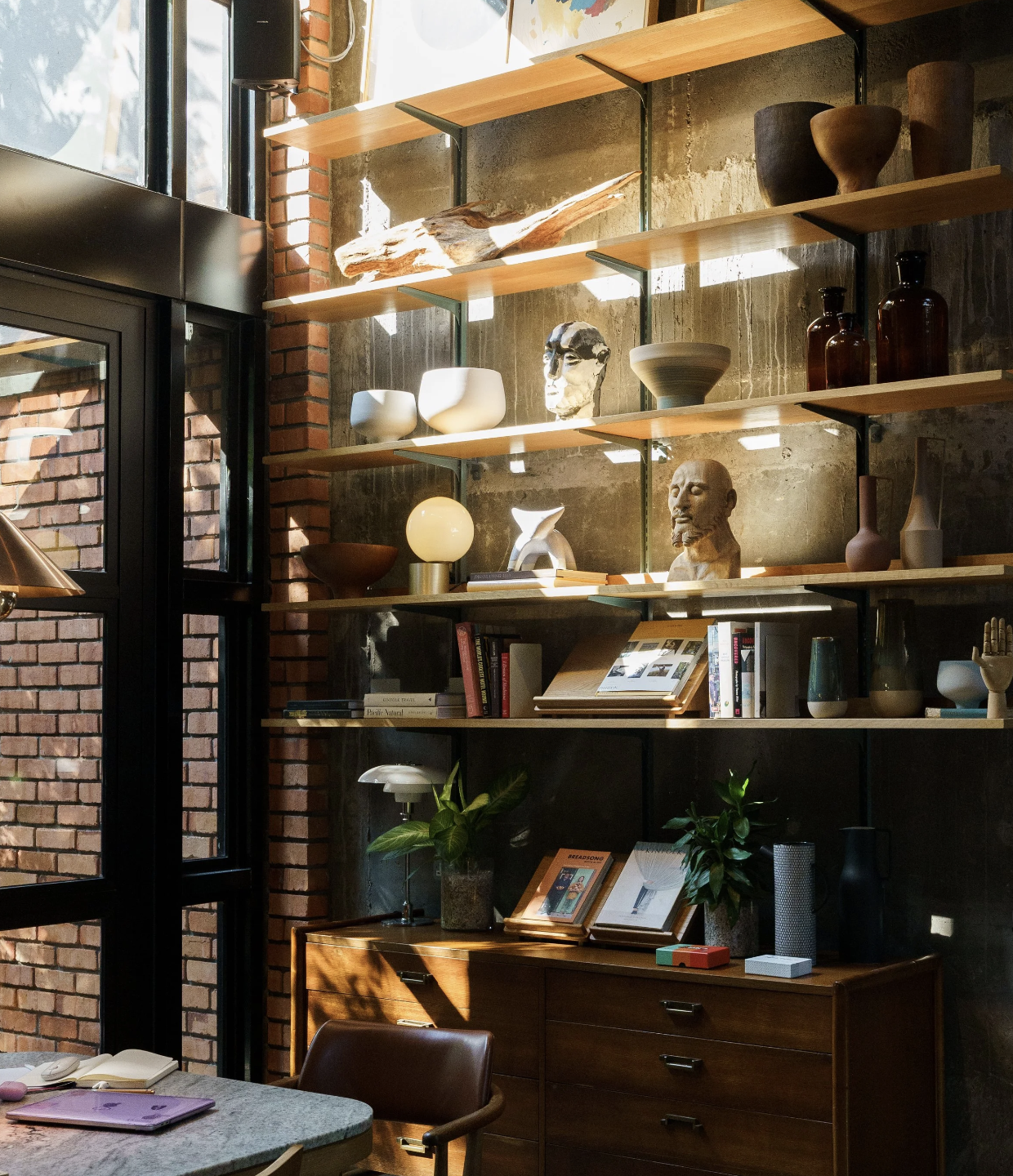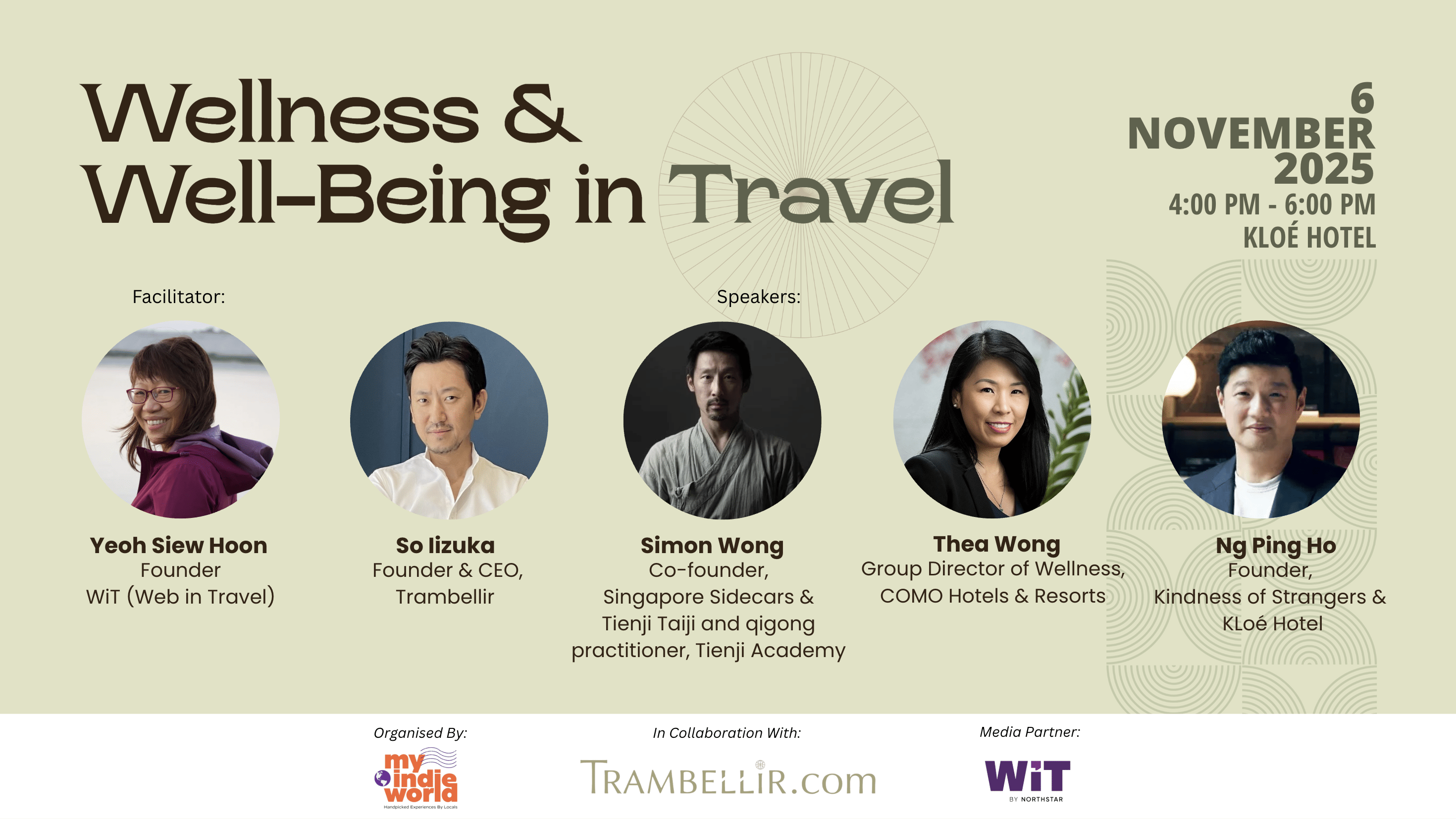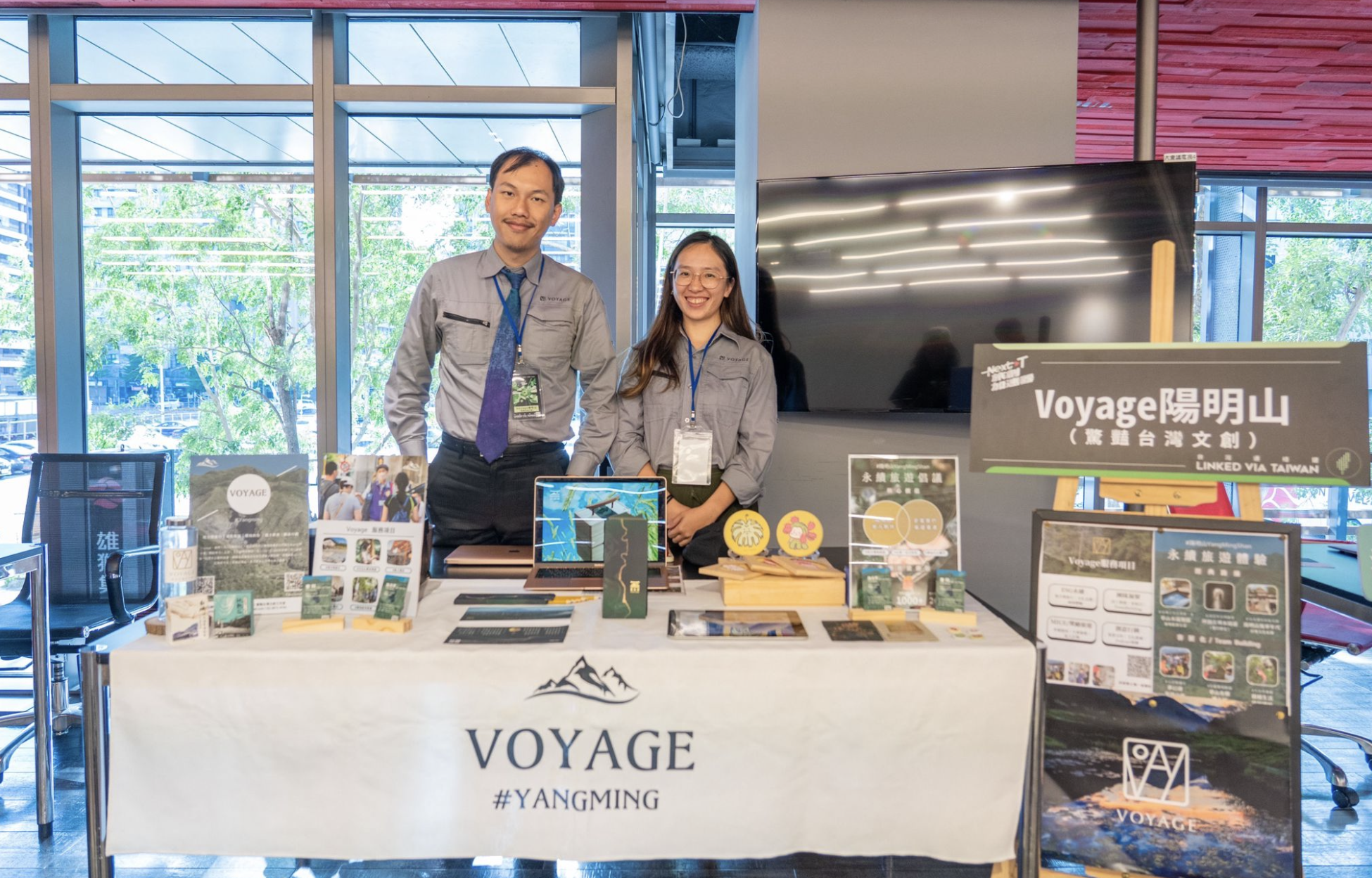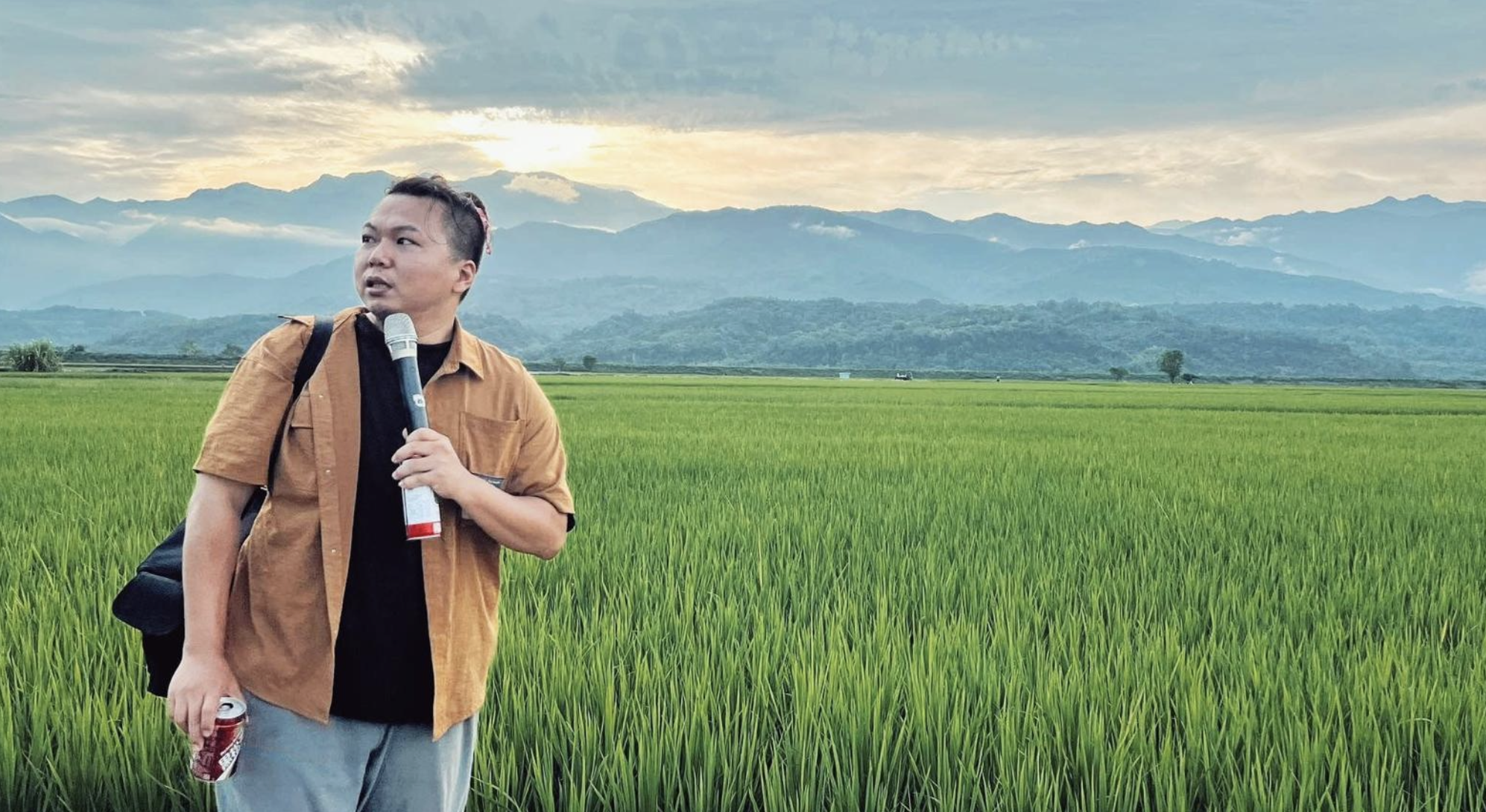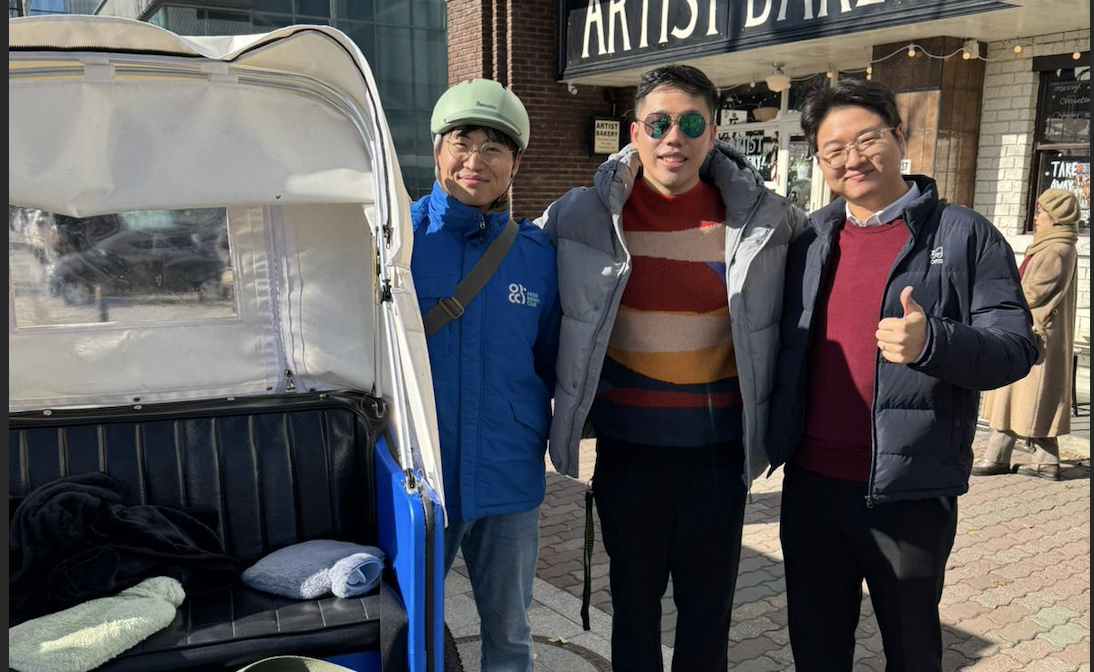Chris Ong doesn’t just celebrate Pai Ti Kong (拜天公-天公诞)—he elevates it into an art form, driven by his passion for ‘creating beauty’. In Penang, where the ninth day of the Lunar New Year explodes in a riot of color and devotion as the Hokkien clan honors the Jade Emperor(天公-玉皇上帝), Chris’s meticulously curated ceremony at the Seven Terraces of George Town Heritage & Hotels Collection, is a spectacle of cultural revival.
Each year, he weaves history, culture, and a deeply personal passion into the grand offering, drawing not only locals, friends, and relatives who cherish this unique occasion, but also a growing number of guests who return annually to partake in its magic. “It’s not just about making offerings; it’s about understanding where we come from and what we’re preserving for the future,” Chris reflects. This is the story of how he pursues his mission of bringing the intangible heritage to life—through his hotels, his collections of Straits Chinese artifacts, and the unforgettable experiences he creates.
Honoring the Jade Emperor
Pai Ti Kong, or the Worship of the Jade Emperor, is one of the most significant celebrations for the Hokkien Chinese community, especially in Penang. According to legend, during a time of persecution, the Hokkien people hid in sugarcane fields for nine days. On the ninth day, they emerged safely and gave thanks to the Jade Emperor, also known as Ti Kong, for his divine protection. Since then, the tradition has been passed down, growing into a grand, elaborate ritual of gratitude and devotion.
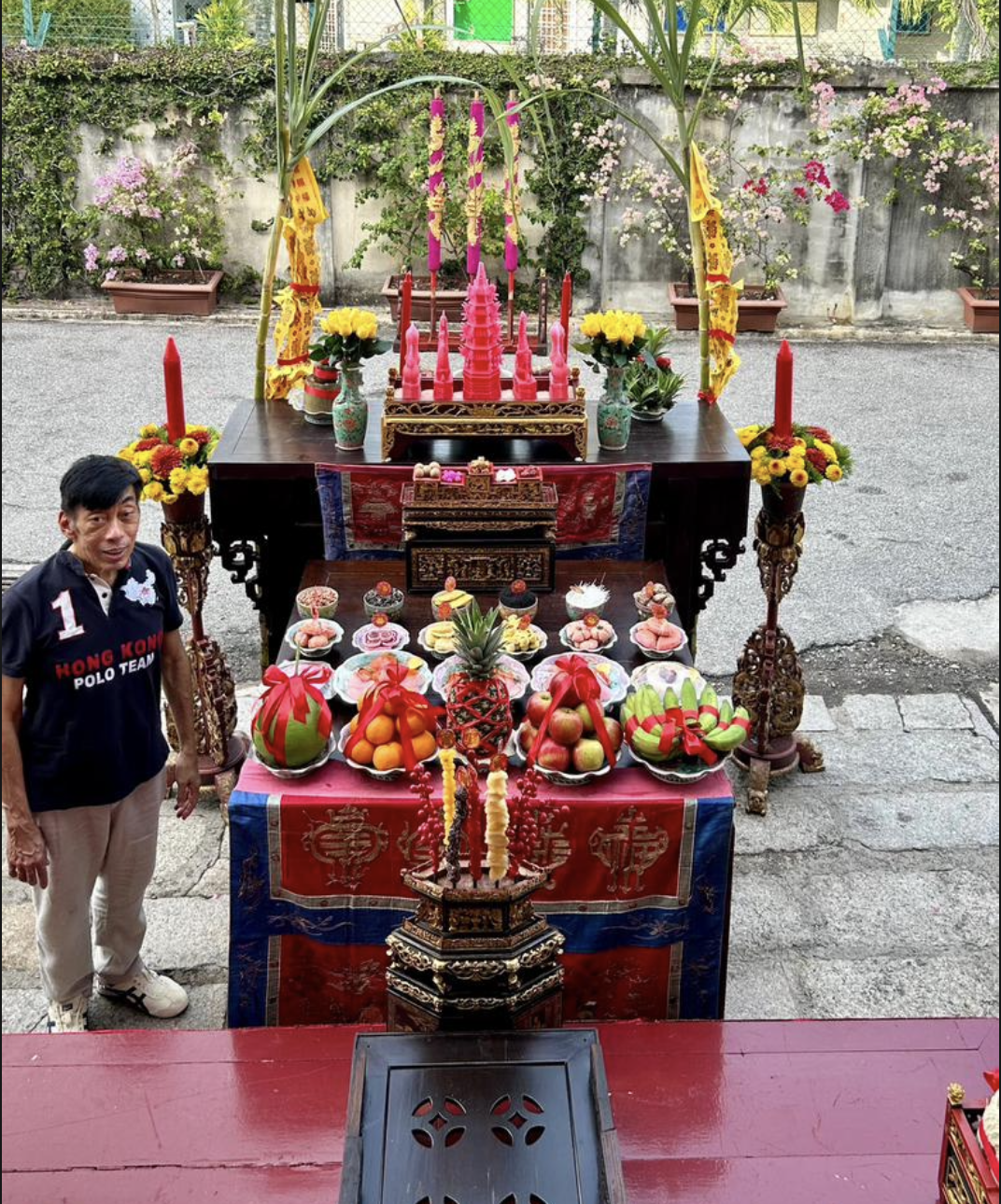
Stands out in every offering table—tall, green stalks of sugarcane (甘蔗) tied in pairs, framing the altar like silent witnesses to a story of survival and gratitude.
The sugarcane remains a timeless symbol of blessing and resilience in the Pai Ti Kong celebration.
Chris embraces this history wholeheartedly. “It’s fascinating how these rituals have endured through generations. The symbolism, the reverence—it’s an entire way of life embedded in these traditions,” he explains. “That’s what I want to preserve—not just the physical structures of our heritage but the stories and rituals that bring them to life.”
Placing It Right, Dressing with Might
Chris’s Pai Ti Kong altar is a masterpiece of curation, reflecting not just religious devotion, but also a deep understanding of cultural rituals. “The best and the greatest artists were used for paintings and sculptures for the church during the Renaissance,” Chris notes. For him, the finest offerings are created with devotion. “If one wants to do an offering, one should be very mindful of what this offering is all about.
And what’s an offering table without a little extra flair? Chris brings his own touch of elegance, curating a stunning selection of antique Peranakan porcelain—each piece carefully chosen to honor tradition with a splash of heritage charm. It’s his way of respecting the gods, as he expresses his devotion through beauty, seeing it as a form of reverence for them.
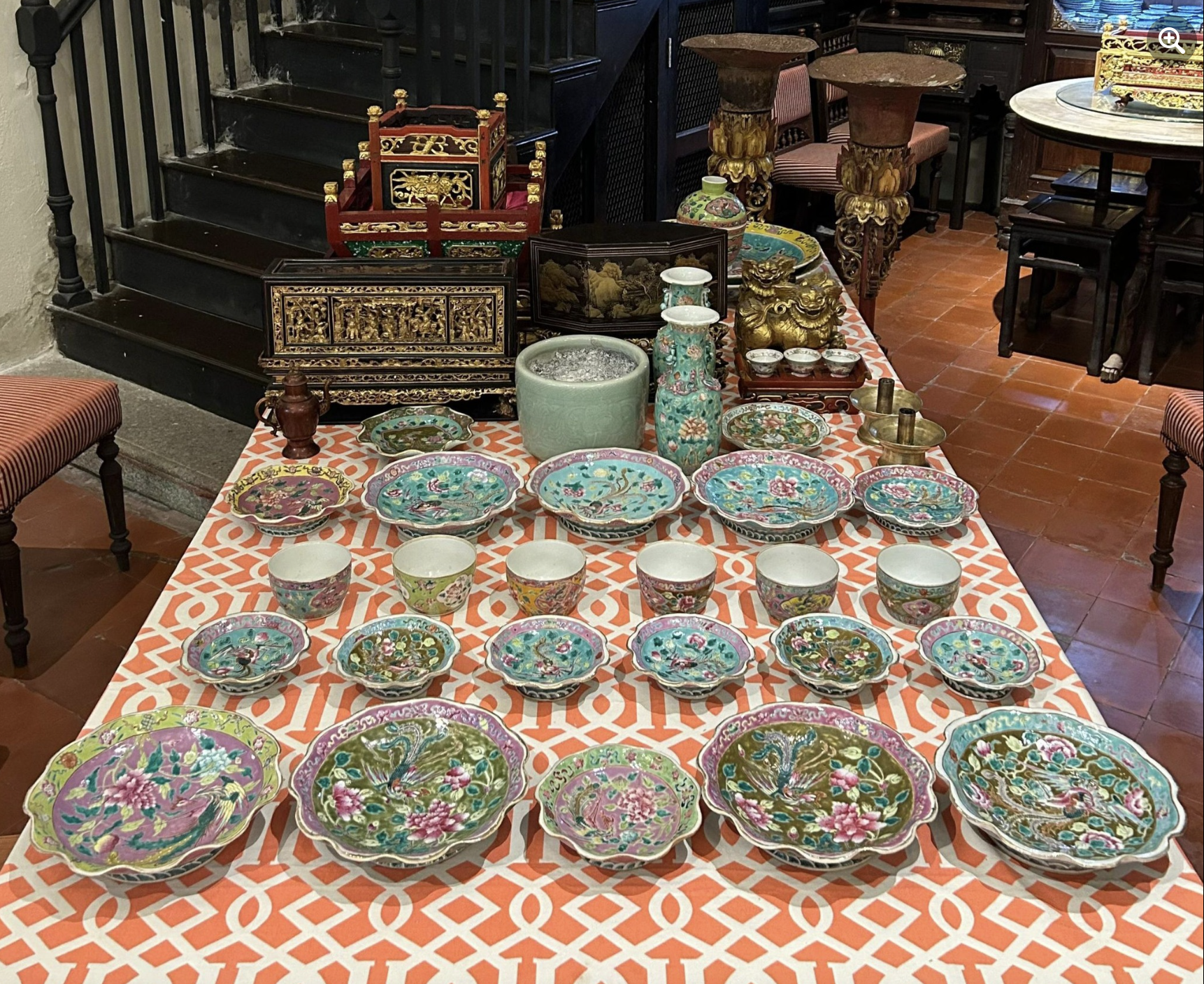
It’s quite elaborate, and it’s not just about placing things on each level—it’s about having the right items for each level.” This year, Chris chose the Fu Lou Sou(福禄寿) altar cloth, representing fortune, prosperity, and longevity. “They are the gods dispatched by the Jade Emperor to impart wisdom to people,” he explains.
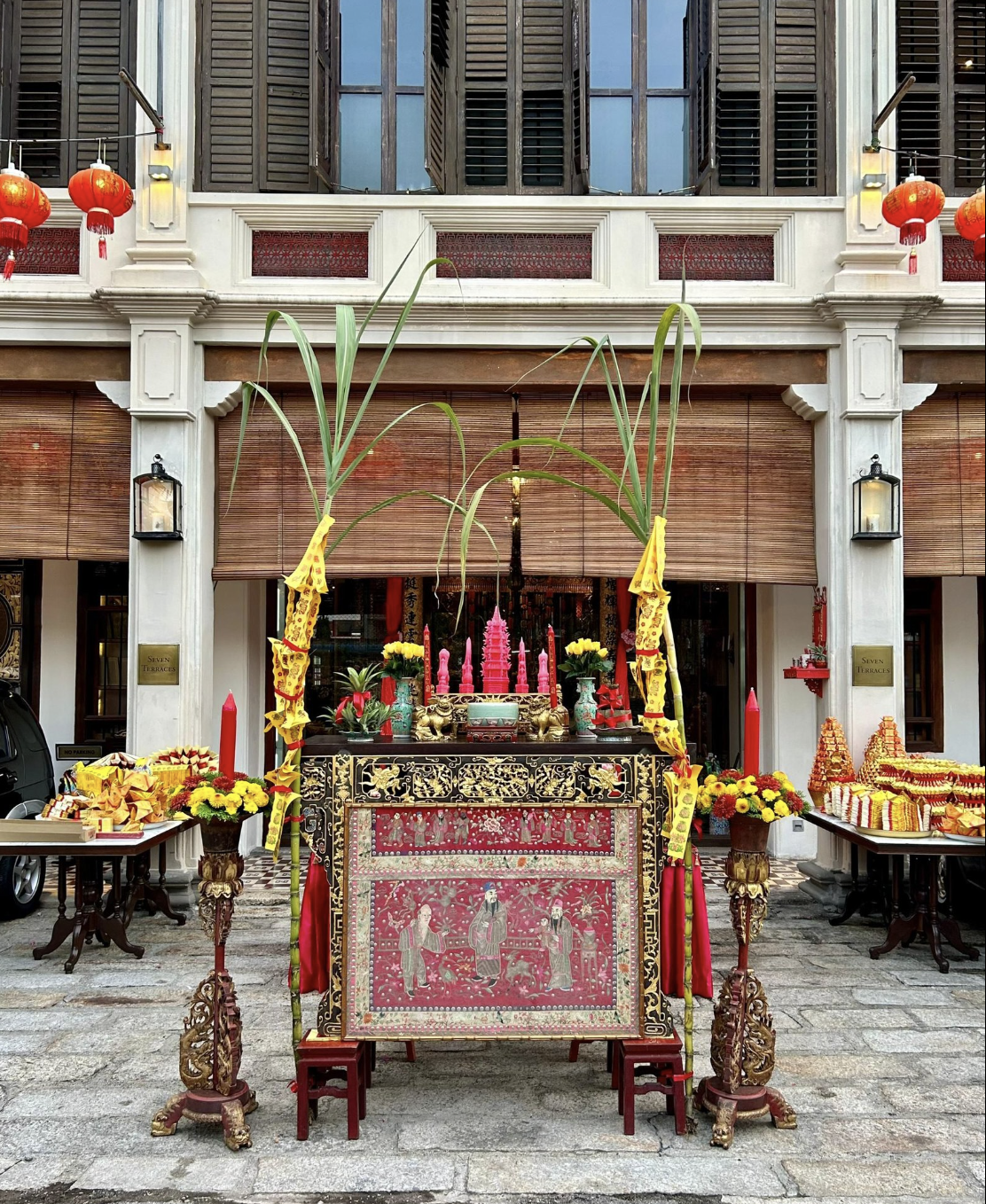
Chris reflects on how these practices were lost in China, particularly during the Cultural Revolution. “In the early 20th century, especially in the southern provinces like Fujian, there was so much turmoil and poverty. People were focused on survival rather than preserving these kinds of traditions,” he says. “This practice was brought over by the first migrants. It’s not really Peranakan in origin; it’s more like traditional Chinese customs.” For Chris and his family, Jade Emperor’s Day remains significant, especially during Chinese New Year. “For us, it’s the most important day,” he adds. “My mother would only put on her new clothes for this occasion. She would save them for the eve of the day.”
Layers of Respect: Understanding the Altar’s Offerings
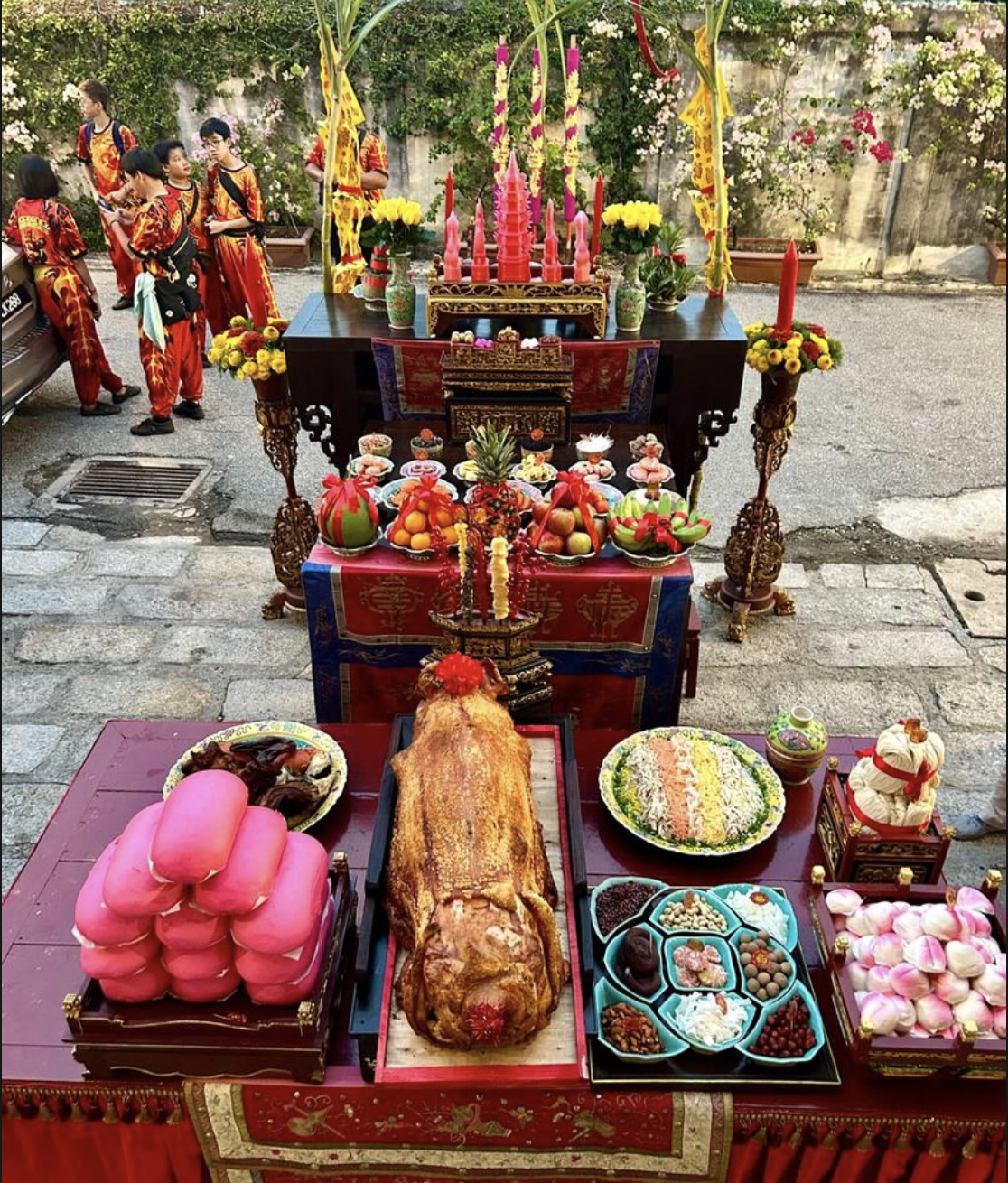
In this sacred ceremony, the Jade Emperor, the supreme deity, is honored at the highest level of the altar. “The Jade Emperor is the god in charge of all heaven and all the other gods, similar to Zeus in the Greek pantheon,” Chris explains. Offerings at this level include incense, tea, Nian Gao(年糕), fresh flowers, and the pineapple blossom, which symbolizes “renewal and regeneration.” Chris shares that these blossoms are cultivated specifically for this event, harvested just once a year.
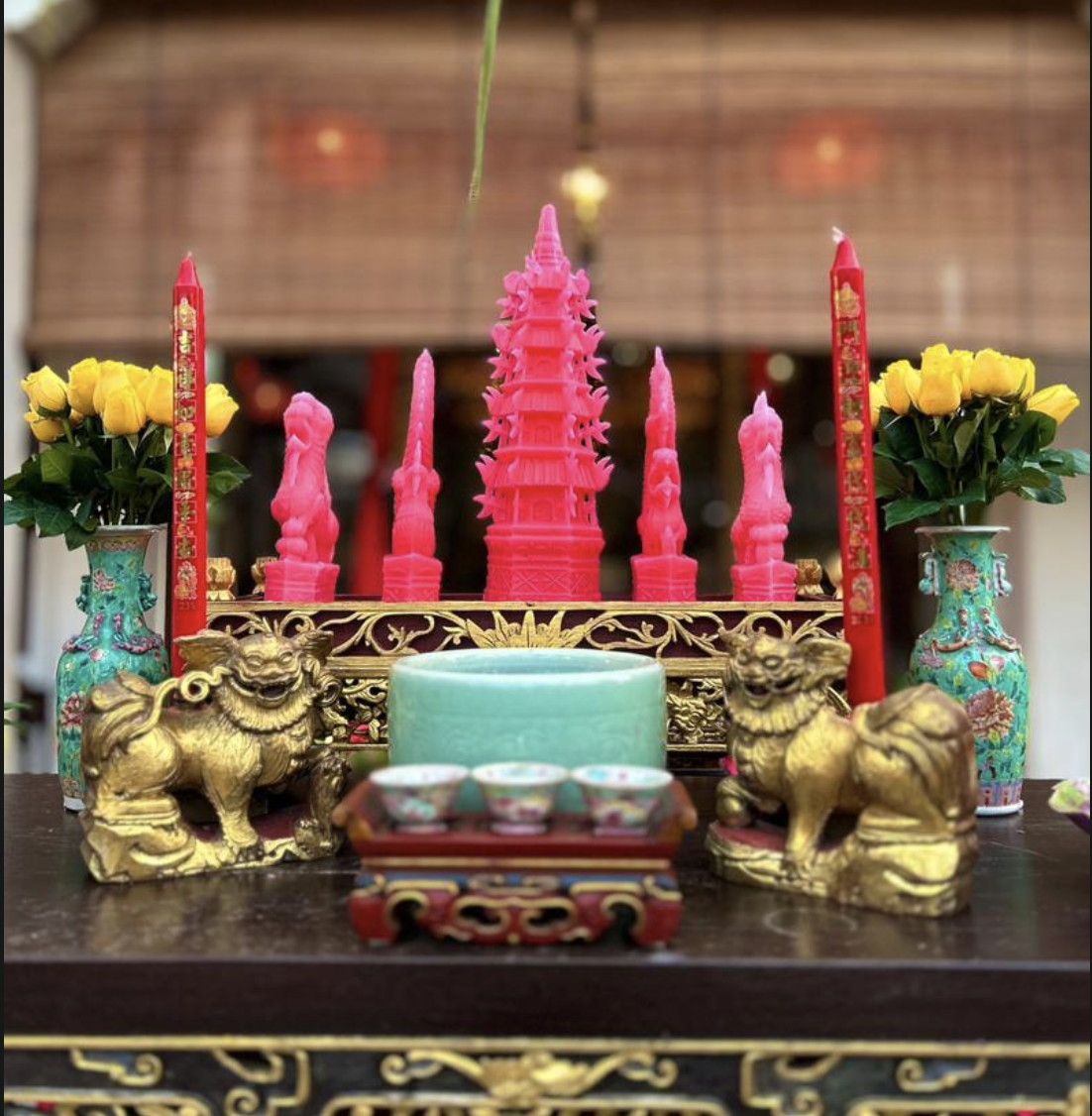
Completing the offerings are the Ngo Sio(五寿)—pink sugar art creations shaped like a pagoda tower, along with celestial beings, such as the dragon, phoenix, and two auspicious lions. “I would probably just call it your birthday cake,” Chris jokes.
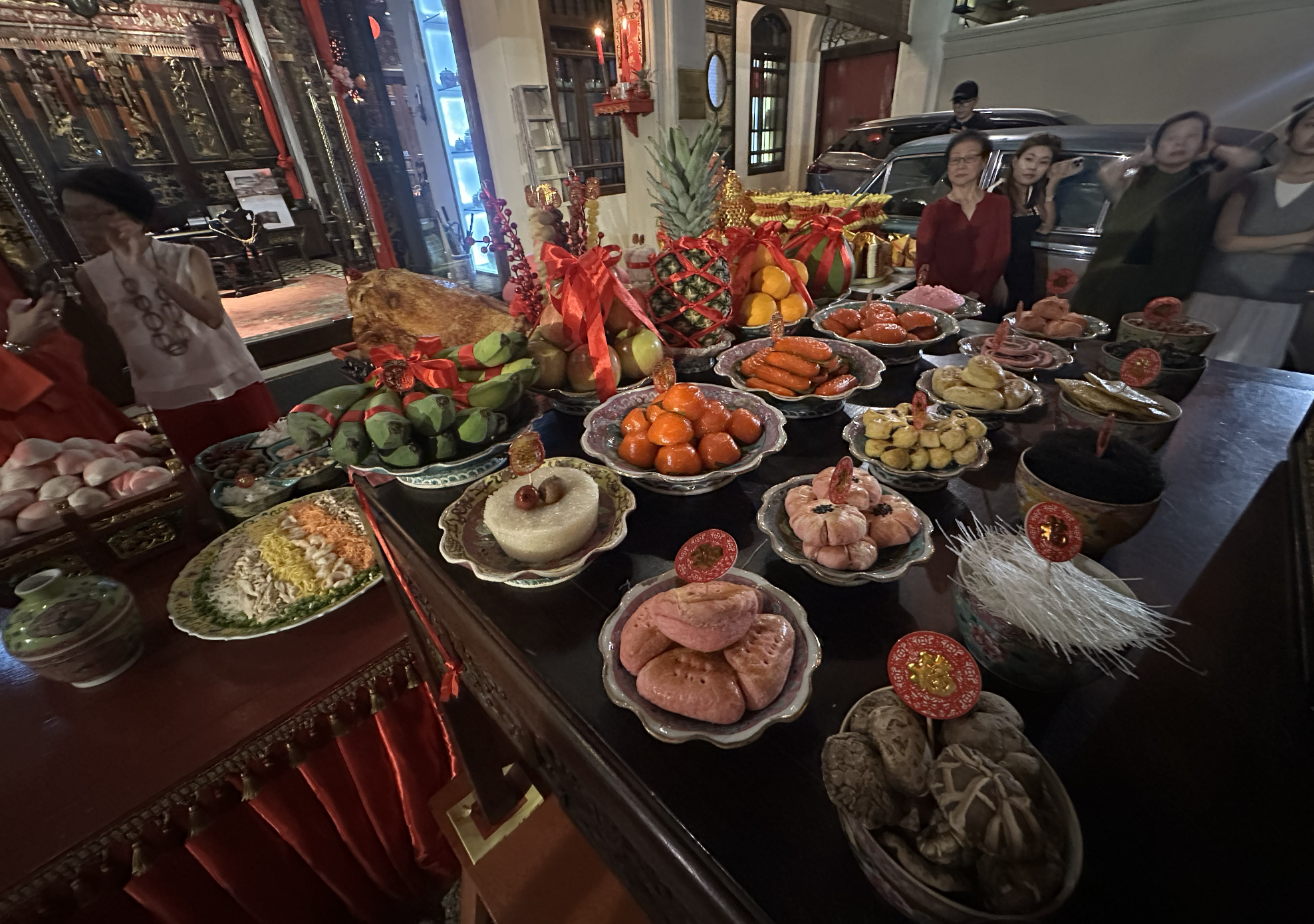
The middle level of the altar is dedicated to vegetarian offerings, including kuih, biscuits, fruits, and raw ingredients such as Chai Liao (菜料). “Chai Liao refers to ingredients used to prepare a vegetarian dish, like mushrooms, black moss, and fu chuk (腐竹),” Chris explains, emphasizing that this level pays tribute to higher-level beings. Among the offerings are Ang Ku Kueh (紅龜粿), a red tortoise cake symbolizing longevity, along with Ang Ee (紅圓) and Ang Tan (紅蟶). Chris notes that Ang Tan, which is positioned in the middle among the Ang Ku Kueh and resembles a gold ingot, is unique to the Pai Ti Kong celebration.
The non-vegetarian level, the most lavish, includes roast pig and Ngo Seng(五生), referring to “five lives”—pork, chicken, duck, fish, and crabs. “In agrarian times in China, these livestock were rare and expensive, and they were only slaughtered for significant occasions like this one,” Chris explains. “For ancestor prayers, we typically offer only three lives: pork, chicken, and duck. For the Jade Emperor, we offer 3 + 2 (fish and crabs).”
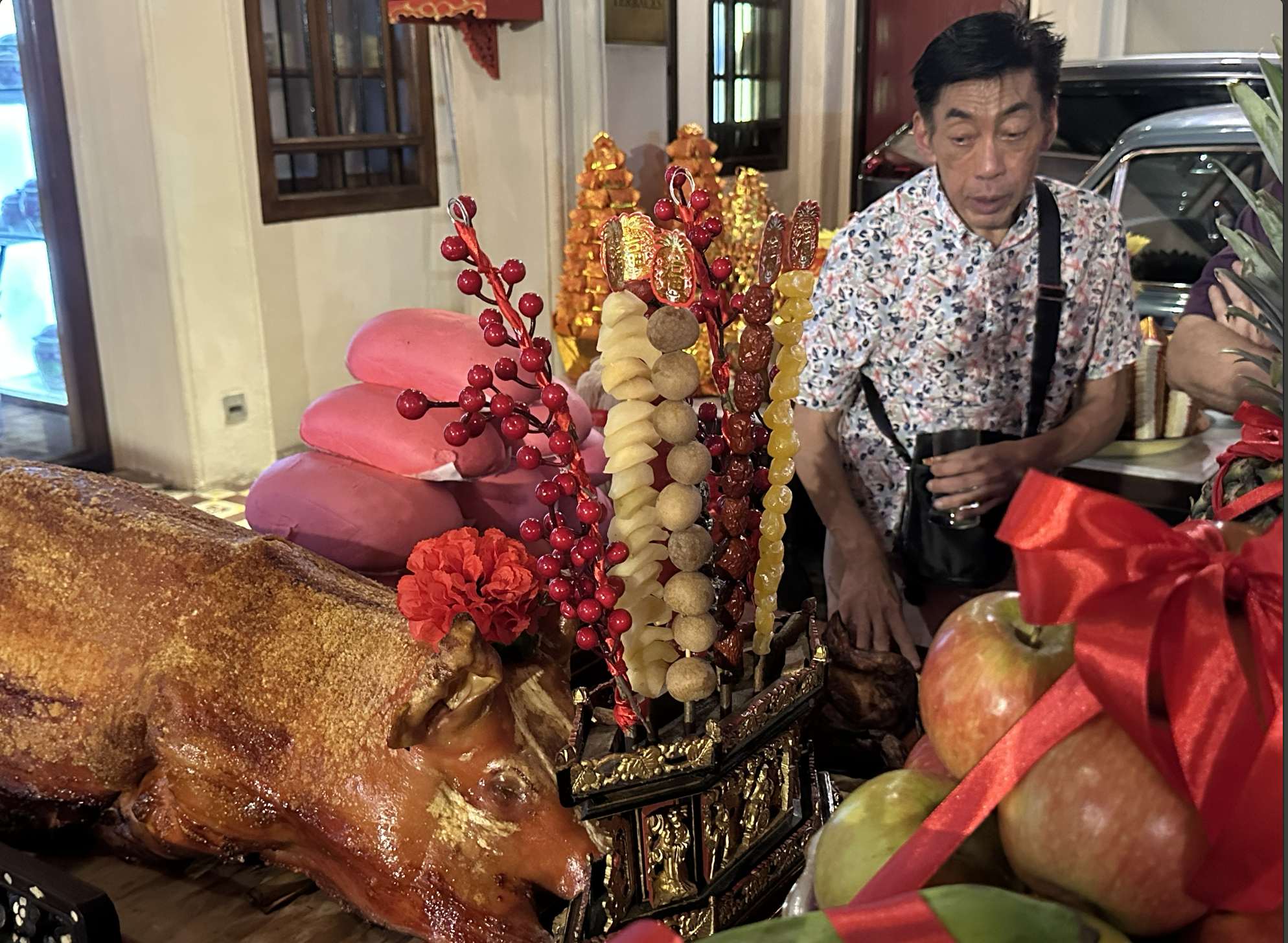
He notes that “the roast pig and the pink buns go ‘hand in hand,’” and that the Bit Chien(蜜饯)- candied fruits are the accompaniment for the roast pork and miku. “It’s pointless to have the sweets without the meat and these represent the holy trinity in terms of the food offerings,” he says. All the buns and miku are placed on a stand with auspicious symbols, such as pigeons, arranged around it, created by Chris. “The mee suan is pulled without breaking, symbolizing longevity.
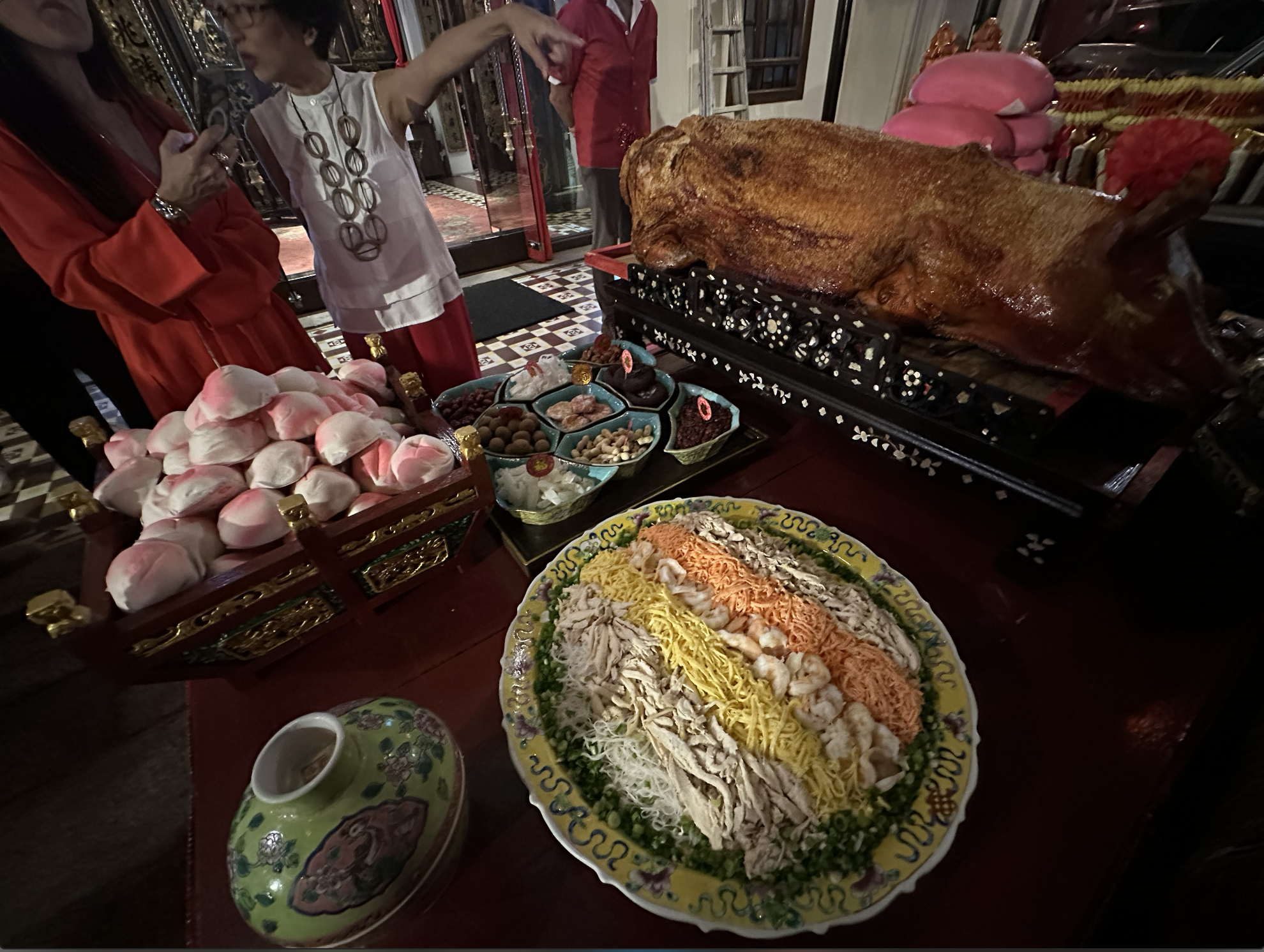
So, we also prepare lum mee, a very Hokkien dish, as it’s a typical birthday noodle. These are all dishes you’d find in a Southern Chinese celebration, especially for birthdays.”
Bringing Cultures Together: A Celebration Beyond Belief
Chris often reflects on the challenges of reconnecting with traditions that have faded from mainstream society. “It’s very sad when you walk down the streets now and don’t see things happening anymore,” he laments. “People don’t live here anymore, and people’s belief systems have changed—I’m not sure how we can bring that back,” he muses. Chris recognizes that restoring these traditions isn’t just about effort; it requires a collective desire to reclaim and honor the rituals that once served as the foundation of community identity.
For Chris, cultural rituals are more than just religious practices—they are a way to bring people together. His approach, particularly at his hotel, is about creating a space where individuals from all walks of life can join in the celebration, regardless of their ethnicity or religious background. “When I first did this in the hotel, it was about team-building—getting everyone involved in something meaningful with my multicultural, multiracial team,” Chris shares. What began as a team-building exercise has since evolved. “It’s no longer just about unity—it’s about raising the level of devotion and connection to these practices,” he reflects.

Old Ties, Fresh Ideas
“I am not very religious,” Chris confesses. “In fact, I believe we are the masters of our own universe. I do this to remind ourselves of our cultural roots and where we come from,” he explains, emphasizing the importance of preserving heritage, especially for the Hokkien communities in places like Phuket, Bangkok, Medan, and Java, where these traditions are still celebrated. “Migrants from southern Fujian province all celebrate this period, but the ones in China have forgotten about it,” he reflects. For Chris, these rituals represent a deep connection to the heritage of the Hokkien people, originating from southern Fujian: “It’s where all the Hokkien came from.”
This deep respect for tradition, however, doesn’t preclude innovation. “I innovate and adapt,” he shares, incorporating contemporary elements and personal creativity to keep the practice relevant. His approach isn’t about replicating traditions verbatim but about adding his own flair to them. “I find fun in creating beauty,” he says, challenging himself each year with new designs. One example is his unique macrame net for the pineapple: “No one’s ever done that before.”
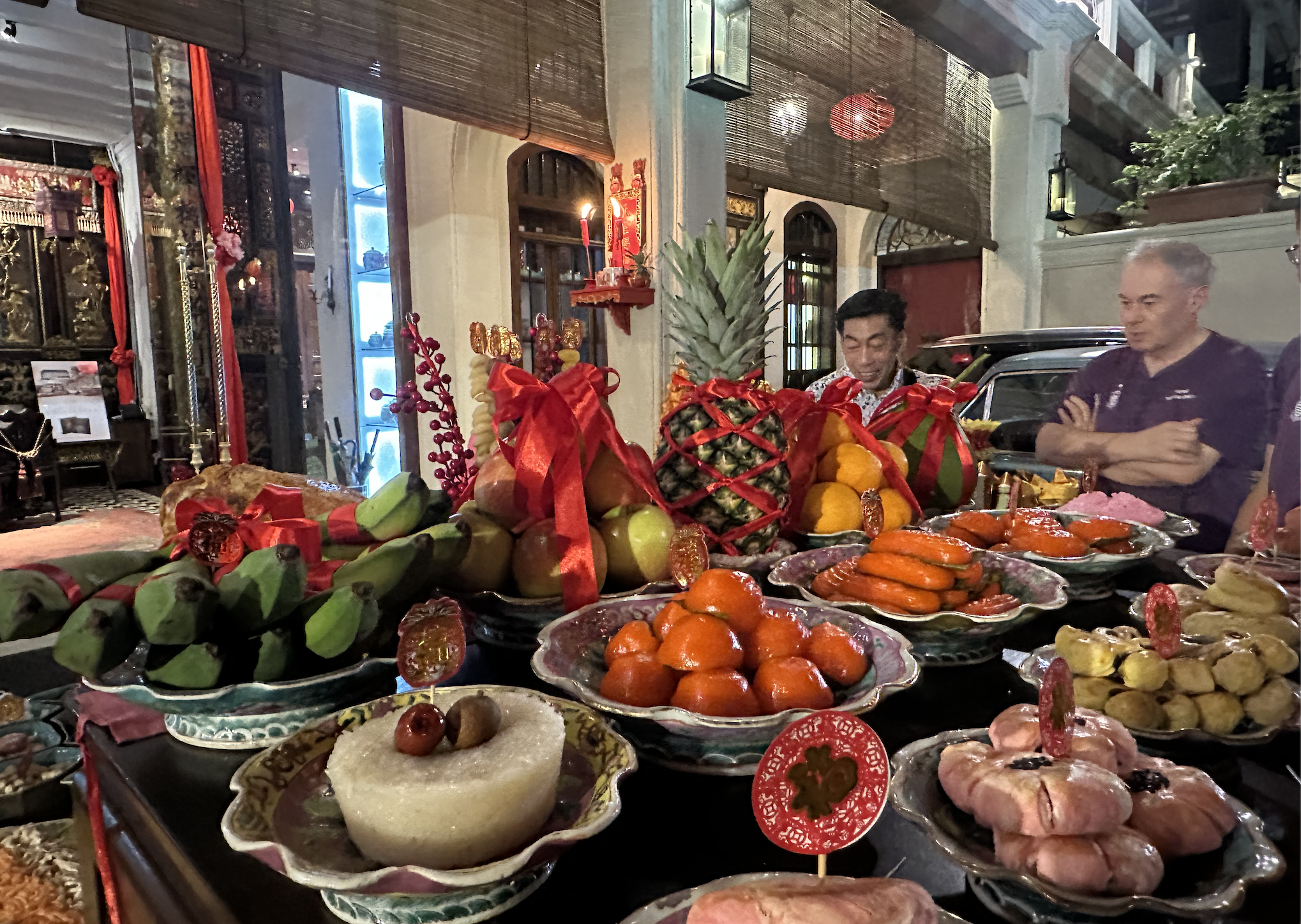
Grandeur Aside, Beauty as Guide
“Raja Uda and Bukit Mertajam are probably the places where all the celebrations are centered around. They are the ones doing the business and they are the ones who want to spend money on this. For them, it’s about doing it on a large scale.” While others may focus on going big in terms of scale, Chris chooses to focus on beauty—much like how he runs his business. “His priority isn’t just about crafting an experience with a focus on aesthetic quality and thoughtful execution—it’s about creating beauty. For Chris, it’s not just about the scale of the gesture, but the quality and meaning behind it. He believes that true success comes from creating something elegant and meaningful.”
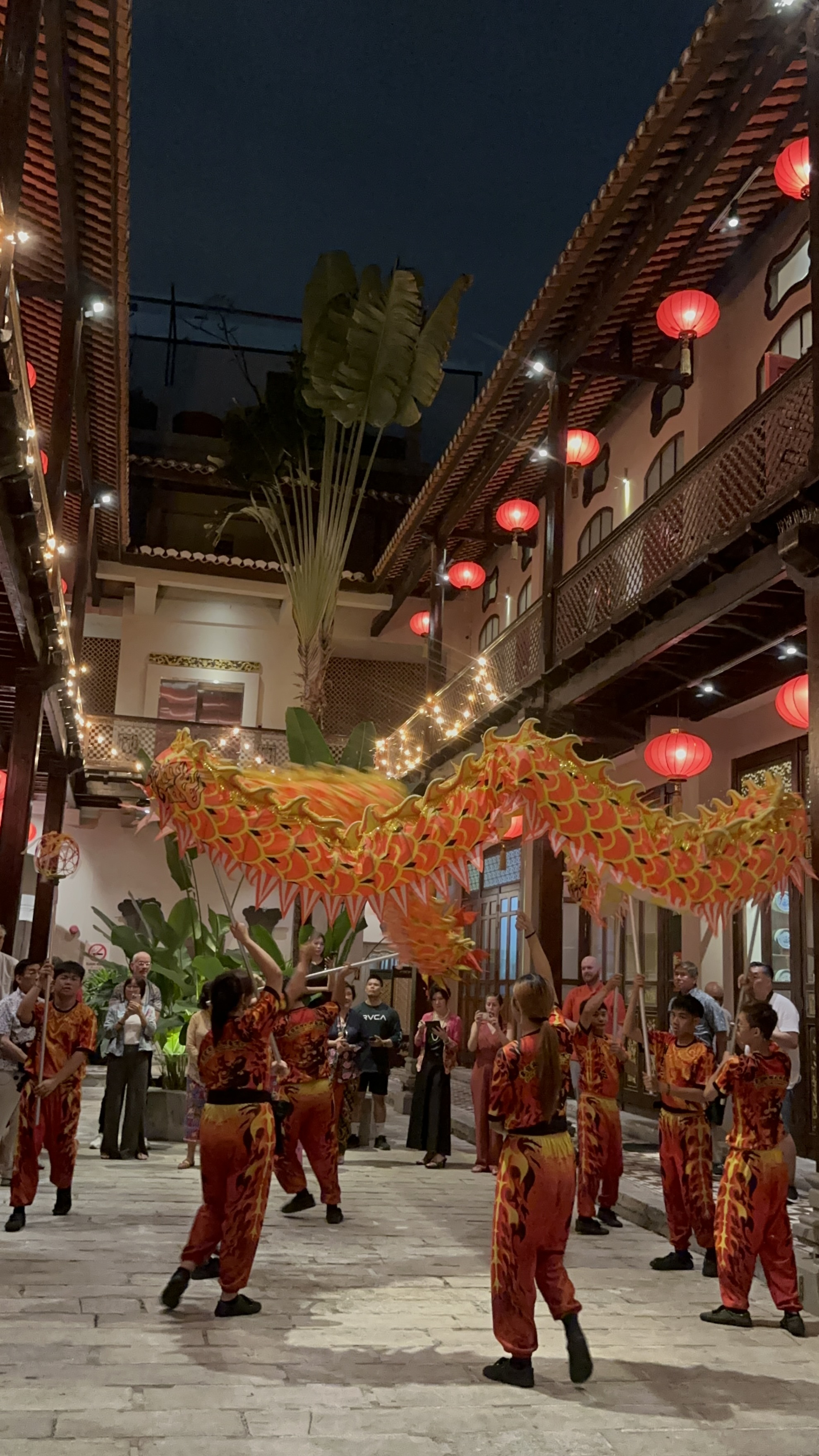
A Renaissance of Culture and Community
“It’s in my DNA, and I have a feel for what it’s supposed to be,” Chris explains. “Otherwise, the practice will just die off.” He adds, “People often associate the Renaissance with Europe, but I see a renaissance happening here in Penang. We are reclaiming our heritage, reimagining it, and making it relevant to younger people—making it contemporary, making it accessible. That’s what excites me.” He chooses his words carefully, emphasizing the rebirth of cultural traditions and the regeneration of Georgetown that might otherwise fade away in the modern world.

This year, guests witnessed an impromptu arrangement—Chris’s niece, Mirai, dressed in a delicate Nyonya kebaya, performing I Could Have Danced All Night on the harp under a breathtaking peranakan art installation. The unexpected melody of the English classic, played with such grace in a Peranakan ensemble, against the solemnity of an ancient Chinese ritual, created a moment of quiet magic. The blending of cultures—Western music, Peranakan attire, and Chinese tradition—beautifully embodied Chris’s philosophy: some things evolve, yet certain essences remain timeless.
For me, as someone who hadn’t fully celebrated it back then, it was truly an honor to witness such an exquisite fusion of heritage and artistry. The beauty of the moment, the reverence of the ritual, and the sheer unexpectedness of it all—it felt as if I, too, could have danced all night.
As firecrackers explode in the distance, marking the approach of midnight, I reflect. Perhaps this is how Chris ensures the future of this intangible heritage—by celebrating it, sharing it, and empowering others to find their own place within its evolving story. And he’s not stopping here. “My passion is in Penang, and all I want to do is bring back the full calendar of intangible heritage and cultural practices—the entire annual cycle of traditions we once celebrated. That’s my next step,” he explains.
